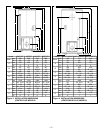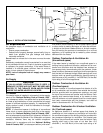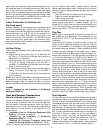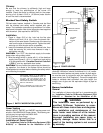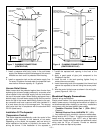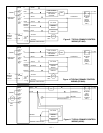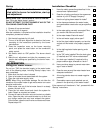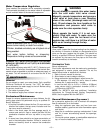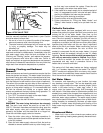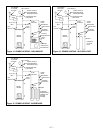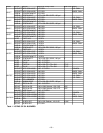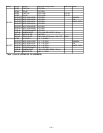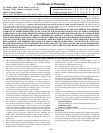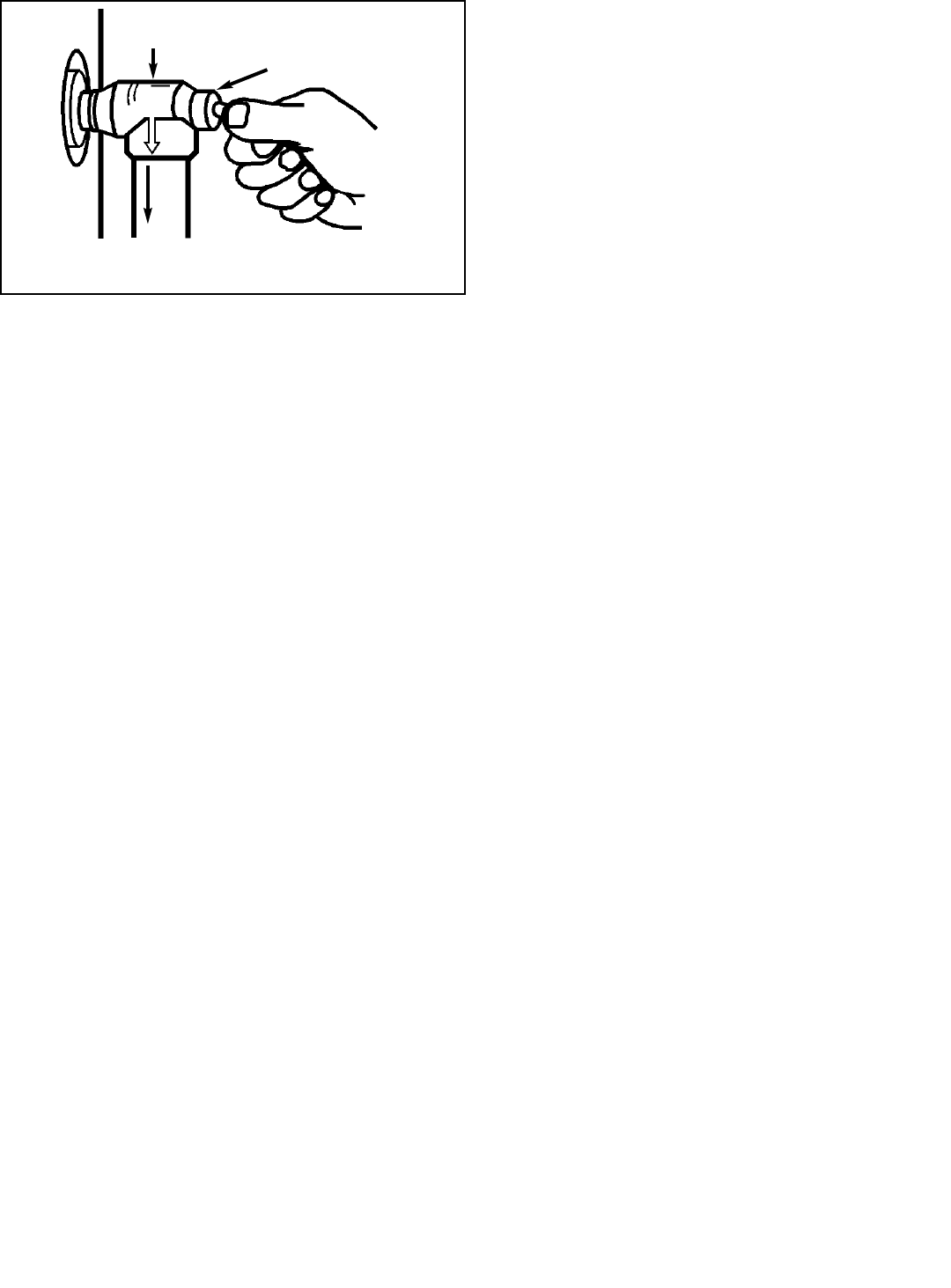
WARNING! The temperature and pressure relief valve
must be manually operated at least once a year. Caution
should be taken to ensure that:
1. No one is in front of or around the outlet of the temper-
ature and pressure relief valve discharge line.
2. The water manually discharged will not cause any bod-
ily injury or property damage. The water may be
extremely hot.
If, after manually operating the valve, it fails to completely
reset and continues to release water, immediately close the
cold water supply valve, drain the tank as directed in the
“Draining and Flushing” section, and replace the tempera-
ture and pressure relief valve with a new one. Failure to
install and maintain an approved temperature and pressure
relief valve will release the manufacturer from any claim that
might result from excessive temperature or pressure.
Draining, Flushing and Sediment
Removal
Some maintenance and service procedures require that the
heater be drained and empty. The water heater should also
be drained if being shut down for an extended period of time.
Water may contain fine particles of soil and sand which set-
tle to the bottom of a tank and thus form a layer of sediment.
The action of the anode may also help to form sediment. If
not removed, the heater could develop a tendency to pound,
gurgle, or thump when heating up. It is recommended that
the tank be drained and flushed on a regular basis to
remove any sediment that may buildup during operation. To
drain the tank and remove the sediment:
1. Turn "OFF" the electrical supply to the water heater.
2. Close the cold water supply valve.
3. Attach a hose to the drain valve and route to an adequate
drain.
CAUTION! The water being drained can be extremely
hot! The drain hose should be rated for at least 93°C
(200°F). If the drain hose does not have this rating, open the
cold water supply valve and a nearby hot water faucet
served by the system until the water flow is no longer hot.
Close the cold water supply valve and resume.
4. Open the drain valve using a flat-blade screwdriver. A
nearby hot water faucet must be opened to allow the tank
to be fully drained.
5. Open the cold water supply valve and flush the tank as
needed to remove sediment and any other foreign mat-
ter that may have entered the system. Close the cold
water supply valve when clean water flows.
6. If the heater is to remain empty for an extended period of
time, it is suggested the drain valve be left open. When
draining is complete, the hose may be removed.
7. Perform any other servicing as required.
8. Close the drain valve and disconnect hose.
9. Follow instructions for “Filling the Water Heater” and
“Startup” when heater is ready to be put back into ser-
vice.
Cathodic Protection
Your water heater has been equipped with one or more
anodes that protect the glass-lined tank from corrosion and
prolong the life of the water heater. Over time, as the
anode(s) works, it slowly dissolves, exposing the steel inner
core. Once the anode(s) is depleted, the tank will start to
corrode, eventually developing a leak. Depending on water
conditions, an anode(s) can last from one to ten years. Many
localities treat their water and this can have a significant
effect on the life of your heater. Water conditioning, such as
over-softening, can accelerate the rate at which the
anode(s) is consumed. As with any water heater, it is good
practice to check the anode(s) annually to see if it needs
replacing. Do not remove this anode(s) permanently as it
will void any warranties, stated or implied. Rapid deple-
tion or failure to maintain the anode can leave a heater
unprotected and may result in premature failure of the
heater due to corrosion and leaks.
This series of oil fired water heaters are factory equipped
with 1 or 2 anodes, depending on the model. The JW717/
JW727 models are equipped with one heavy duty anode.
Under normal circumstances, these anodes should last the
life of the tank and need not be replaced.
Hot Water Odour
On occasion, and depending on your location, hot water
may develop a strong odour. This can be especially prob-
lematic in regions where the water contains sulphur, which
results in hot water having a "rotten egg" odour. If this
occurs, drain the system completely, flush thoroughly and
refill the tank. If the water odour or discoloration persists, the
anode(s) may need to be changed from magnesium to one
made of aluminum. Aluminum anodes may reduce, but not
eliminate, water odour problems. The water supply system
may require special filtration equipment from a water condi-
tioning company to successfully eliminate all water odour
problems. In certain cases chlorinating and flushing of the
water heater may be required. Contact your dealer or water
supplier.
Discoloured Water
• Water rich in iron or other minerals can produce red or
brown staining. Heating water generally worsens this sit-
uation.
– 14 –
Figure 12 T&P VALVE TEST.
Temperature and Pressure
Relief Valve
Manual Relief Valve
Discharge line to drain



